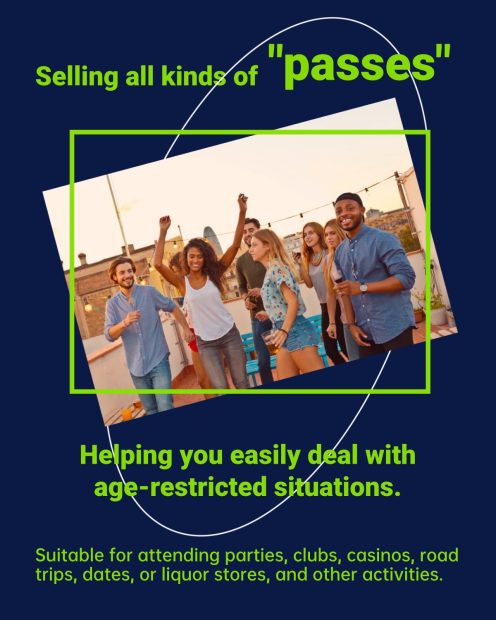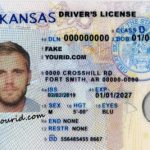Accurate identity confirmation is a cornerstone of secure educational environments. For language schools, which often serve diverse student populations—including international learners—the task of verifying student identities goes beyond basic record-keeping. It intersects with legal compliance, safety protocols, and support for students navigating visa requirements or official documentation needs. One critical framework in this context is Real ID, a federal standard that shapes how identity is validated across the U.S. Understanding how Real ID works and how language schools contribute to student verification can clarify best practices for both institutions and learners.
What is Real ID and Why Does It Matter?
Enacted by the 2005 REAL ID Act, Real ID sets minimum security standards for state-issued driver’s licenses and identification cards. These IDs are required for specific federal purposes, such as boarding domestic flights, entering military bases, or accessing federal facilities. While not a national ID, Real ID establishes uniform criteria for what constitutes a valid form of identification at the federal level.

To obtain a Real ID, applicants must provide:
- Proof of identity (e.g., birth certificate, valid passport)
- Social Security number verification
- Two documents proving residential address (e.g., utility bills, bank statements)
- Evidence of legal presence in the U.S. (for non-citizens)
States issue Real IDs alongside standard licenses, but the former includes a gold star in the top-right corner to denote compliance. As of May 7, 2025, a Real ID (or other federally approved ID) will be mandatory for domestic air travel and federal facility access.
Why Student Verification Matters in Language Education
Language schools operate in a unique space. They cater to students of varying ages, nationalities, and visa statuses, many of whom rely on their enrollment for legal stay in the U.S. Effective verification ensures:
- Fraud Prevention: Stopping individuals from using false identities to enroll, access services, or misrepresent their status.
- Accurate Record-Keeping: Maintaining reliable data for administrative, reporting, and emergency purposes.
- Compliance with Laws: Aligning with federal regulations like the REAL ID Act, the Student and Exchange Visitor Program (SEVP), and immigration policies.
- Support for Student Success: Ensuring students can access resources—such as library services, housing, or visa extensions—by validating their enrollment status.
How Language Schools Contribute to Student Verification
Language schools act as frontline verifiers, bridging the gap between students and official systems. Their role involves several key steps:
1. Collecting and Validating Primary Documents
Schools request government-issued IDs (passports, state driver’s licenses, or Real IDs) and cross-check them against enrollment forms. For international students, this often includes:
– Passport with valid visa stamps
– I-20 or DS-2019 forms (required for F-1/J-1 visa holders)
– SEVIS (Student and Exchange Visitor Information System) enrollment confirmation
Staff are trained to inspect documents for security features—holograms, watermarks, or microprinting—to detect forgeries. For example, a Brazilian student’s passport may include unique UV-reactive ink, which staff learn to identify using specialized tools.
2. In-Person Identity Checks
Many schools require students to visit campus during enrollment to match their physical appearance with photo IDs. This step is critical for preventing identity theft, especially when documents are submitted digitally beforehand. For instance, a school in New York might ask a student from India to present their passport in person, comparing the photo to their current appearance and noting any discrepancies (e.g., hairstyle changes, facial hair) in their file.
3. Digital Verification Tools
Advanced software now helps schools verify identities remotely. Platforms like Jumio or Onfido use AI to analyze ID documents, cross-referencing data with global databases. These tools can flag expired passports, mismatched names, or altered information, streamlining the process for students who enroll online or from abroad.
4. Collaboration with Authorities
Language schools often work with government agencies to confirm student status. For F-1 visa holders, schools must update SEVIS within 21 days of any changes (e.g., enrollment status, address). This ensures the U.S. Department of Homeland Security has accurate records, which in turn supports students’ ability to extend visas or apply for work permits.
Common Challenges in Student Verification and Solutions
Despite structured processes, language schools face hurdles in verifying student identities. Below are five frequent issues and actionable solutions:
Problem 1: Students Lack Standard Government-Issued IDs
International students, minors, or refugees may not have a Real ID, state license, or passport. For example, a high school student from Mexico attending a summer language program might only have a birth certificate and a school ID.
Solution: Accept alternative, notarized documents. Schools can create a list of secondary IDs—such as national identification cards, consular IDs, or affidavits from legal guardians—that are validated by a notary public. For minors, requiring a parent or guardian to co-sign enrollment forms and provide their own ID can add a layer of verification.
Problem 2: Mismatched Information in Documents
Name changes (due to marriage, legal processes) or translation errors in foreign documents can lead to discrepancies. A student from China might have a passport name in pinyin (Li Wei) but go by a Western name (William Li) on enrollment forms.
Solution: Require a legal document explaining the name change (e.g., marriage certificate, court order) and note both names in the student’s file. For translated documents, accept certified translations from approved services (e.g., the American Translators Association) to ensure accuracy.
Problem 3: Difficulty Verifying Digital or Non-Physical IDs
Some students submit digital copies of IDs (e.g., scanned passports) for remote enrollment. These can be altered, making it hard to confirm authenticity.
Solution: Use third-party verification services that specialize in digital ID checks. Tools like IDnow or Veriff use liveness detection (asking students to blink or move their head) and document analysis to ensure the ID is both valid and in the student’s possession.
Problem 4: Balancing Privacy with Verification Needs
Collecting sensitive data (e.g., Social Security numbers, passport details) raises privacy concerns. Students may hesitate to share information due to fears of data breaches.
Solution: Implement strict data protection policies. Store documents in encrypted, password-protected systems, limit access to verification staff, and inform students about how their data is used (e.g., “Your passport number is stored only to confirm enrollment and will not be shared with third parties”). Comply with laws like the Family Educational Rights and Privacy Act (FERPA) to protect student records.
Problem 5: Staff Training Gaps in Verification Protocols
Turnover or limited resources can leave staff unprepared to identify fake IDs or follow compliance steps. A new enrollment officer might not recognize a counterfeit Canadian driver’s license, for example.
Solution: Provide regular training sessions. Partner with local law enforcement or ID verification experts to host workshops on detecting forgeries. Create a handbook with step-by-step guides (e.g., “Check for UV ink on page 3 of a U.K. passport”) and update it annually as ID security features evolve.



